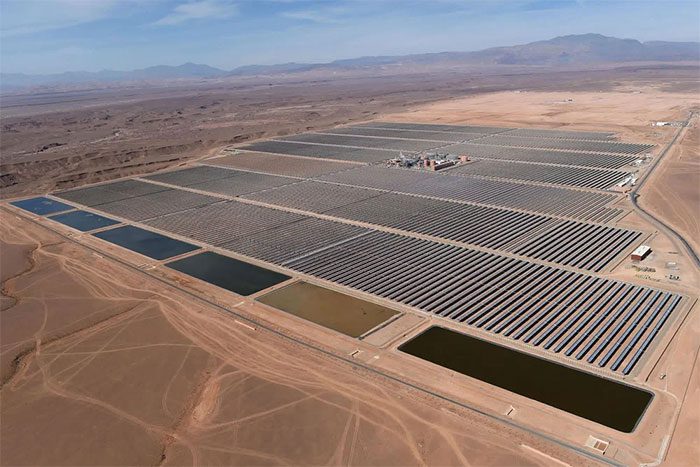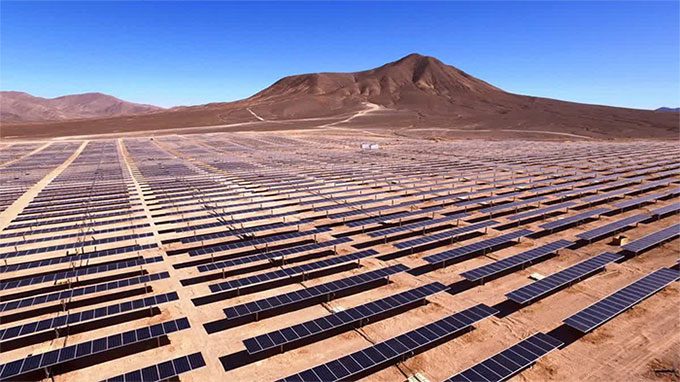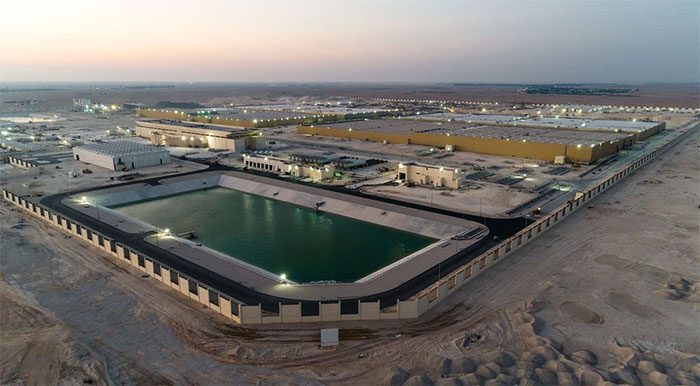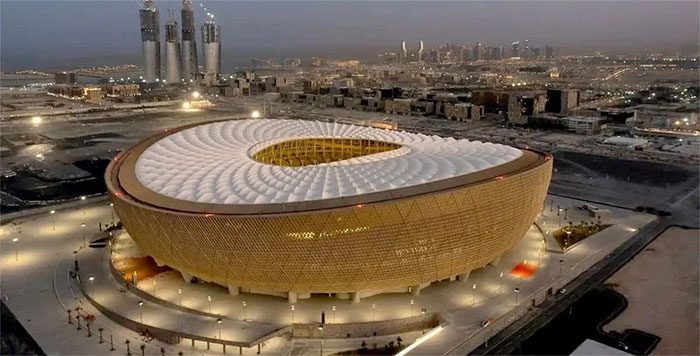Qatar, a nation with a population of nearly 3 million, has been welcoming around 1.5 million tourists during the World Cup 2022 event. This massive influx of people has placed significant pressure on the infrastructure of this Middle Eastern country.
Food and beverage services, utilities, energy, transportation, and recreational activities are all essential sectors that needed to significantly increase capacity to accommodate this enormous crowd. It is no coincidence that Qatar required a preparation time of 12 years for this world’s largest football event. While 12 years may seem lengthy, it is not excessive when considering the need to construct a series of substantial basic infrastructure projects.

Al Kharsaah Solar Power Plant.
Fortunately, one month before the World Cup kickoff, an 800-megawatt solar power plant in Al Kharsaah, Qatar, was inaugurated. This marks the first solar power plant in the country, going operational and representing a significant milestone in Qatar’s energy transition.
This power plant is also one of the crucial ways for World Cup Qatar 2022 to achieve low carbon levels and protect the environment. Qatar has promised that this World Cup will be the first “carbon-neutral” World Cup in the world.
The solar power facility has a total investment of $417 million and is located in the desert, 80 kilometers west of Doha, the capital of Qatar. Spanning an area of 10 square kilometers, the plant is equipped with over 2 million solar panels that convert the region’s abundant solar energy into electricity.

Al Kharsaah uses over 2 million solar panels.
This project commenced in July 2020 and was executed by a joint venture established by three Chinese companies. This joint venture was primarily responsible for installing the photovoltaic components and supports, as well as constructing the elevated substations and grid connection stations. Through technological innovations, the Chinese companies improved the plant’s electricity generation capacity by 20% by utilizing automated robotic arms to clean the solar panels.
As one of the largest solar power plants in the Middle East and currently the third-largest single photovoltaic project in the world, once operational, it is expected to provide Qatar with approximately 1.8 billion kWh of clean electricity annually, meeting the annual electricity consumption of about 300,000 households, which accounts for around 10% of Qatar’s peak national electricity demand. The project will significantly increase the share of renewable energy in Qatar’s energy consumption, projected to reduce carbon dioxide emissions by about 900,000 tons per year.

Giant water reservoir in Qatar.
In addition to electricity, the host country Qatar also prepared in advance for the supply of clean water for this year’s World Cup. It is important to remember that Qatar is located on the Qatar Peninsula, on the southwestern coast of the Persian Gulf, where the climate is tropical desert and water resources are very scarce.
To ensure a safe water supply during this year’s World Cup, Qatar has constructed 15 super-sized water reservoirs at five locations across the country. These reservoirs were also established with the support of Chinese companies.
The strategic super-large water reservoir project in Qatar officially commenced in April 2015 and includes seawater desalination systems, water storage, transportation, distribution, and accompanying projects.
Notably among these constructions is a super-large water reservoir measuring 305 meters long, 150 meters wide, and 11.3 meters high. This is the largest single reservoir in the world. Designed with a capacity of approximately 500,000 cubic meters, it can supply water for 2 million people daily. In special circumstances, it can alone ensure Qatar’s water consumption for seven days.

The final match of WC 2022 will take place at Lusail Stadium.
Additionally, there is a series of new and massive stadiums in Qatar. Among them, the most prominent is the main and largest stadium of the country named Lusail. This stadium has a seating capacity of 80,000, designed to resemble a boat, surrounded by a water moat. The entire stadium will be cooled by solar energy, with zero carbon emissions. The total construction cost of Lusail Stadium is estimated to reach $767 million. It will host 10 matches of the World Cup 2022, including 6 group stage matches and 4 knockout stage matches, including the final.
Unlike previous World Cups, this year’s event in Qatar will be the first time players and fans will enjoy a cool breeze from air conditioning. The modern air conditioning system will cool the air and then direct it into the stadium through nozzles placed throughout, and all will be sucked back, cooled again, filtered, and pushed out. Essentially, the air conditioning principle in Qatar’s stadiums is similar to that of a car’s air conditioning, but on a much larger scale. This is a necessary condition to help players perform at their best.

Thousands of buses have been imported for WC 2022 in Qatar.
To ensure the transportation of fans during the World Cup, Qatar has imported about 1,500 buses, including 888 fully electric buses, accounting for over 30% of the total vehicles serving the World Cup.


















































